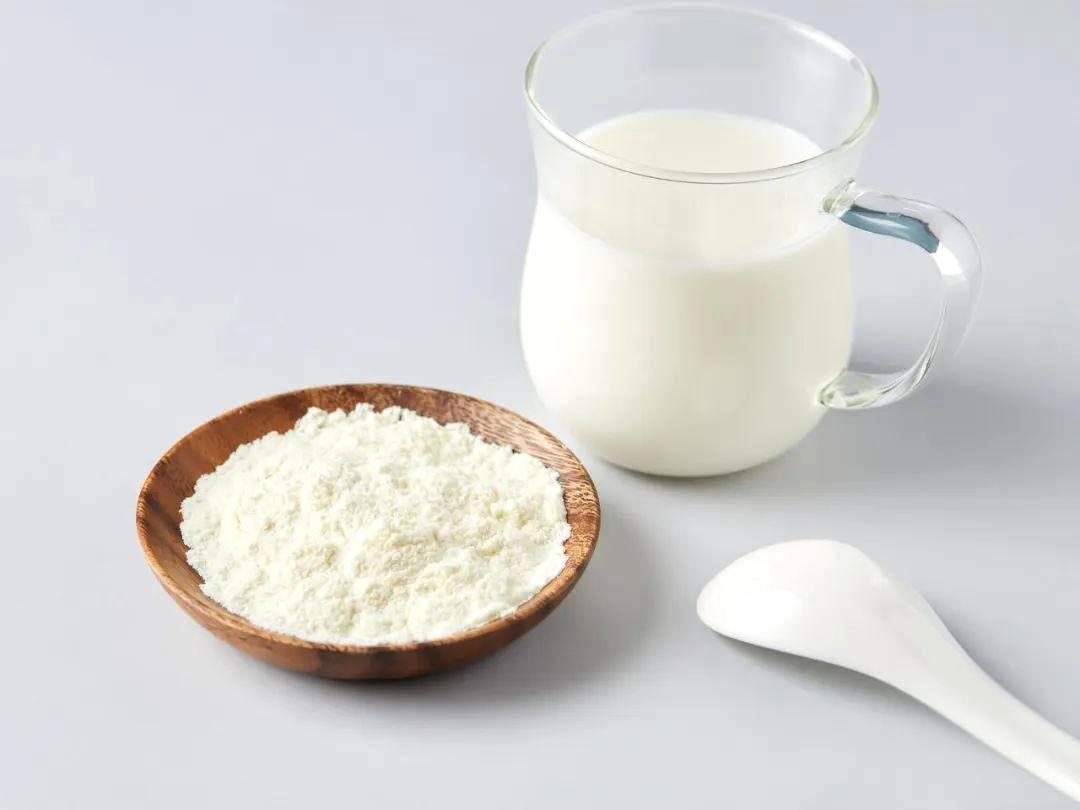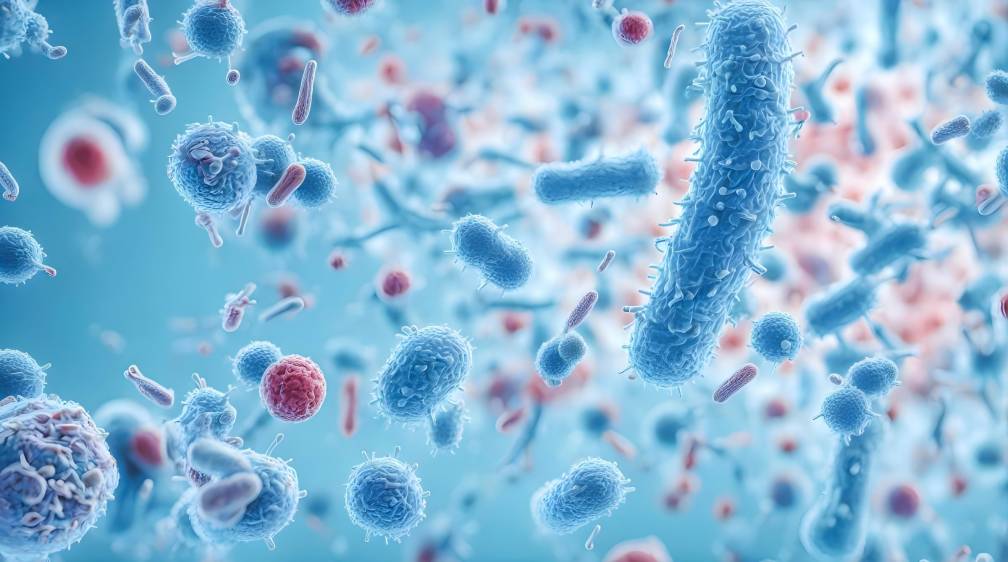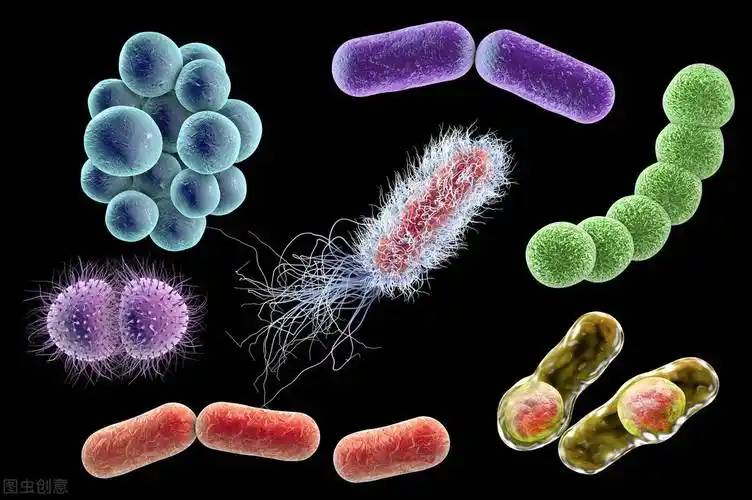What Is Galacto Oligosaccharide (GOS)?
Oligosaccharides are a new type of functional food additive. Among them, the one with the best therapeutic effect in dietary therapy is galacto-oligosaccharide (GOS), also known as “bifidus factor”. In nature, GOS is found in trace amounts in animal milk, with slightly higher levels in breast milk. It is a functional oligosaccharide with natural properties. Due to its unique physiological functions and physical and chemical properties, it has become a research hotspot in food science and is widely used in many fields such as dairy products, baked goods, candy processing and functional foods.
1 Physical and chemical properties and physiological functions of GOS
1.1 Physical and chemical properties
Non-digestible GOS is an important prebiotic and a natural component of breast milk [1]. It can be synthesized by β-galactosidase using lactose as a substrate and through the enzymatic reaction of galactosylation. It is obtained by connecting 1 to 4 galactose units to the galactose side of the lactose molecule with β (1→3), β (1→4) or β (1→6) glycosidic bonds [2]. 1 to 4 galactose units are linked via β (1→ 3), β (1→ 4) or β (1→ 6) glycosidic bonds. The main bond between the galactose units is β (1→ 6). The molecular formula is (Galactoses)n - G lucose, n= 2 to 5.
GOS is a low molecular weight water-soluble dietary fiber with low viscosity, strong moisture retention, does not bind minerals, has a refreshing taste, low caloric value, and a sweetness that is only 20% to 40% that of sucrose. It is highly stable to both acids and heat, and will not decompose under conditions of 180°C or pH 3. It is highly pigmented, has strong moisture retention, no undesirable texture or flavor, and is not digested by human digestive enzymes. It has good bifidobacterial proliferation activity [2]. Therefore, GOS is a very high-quality food additive.
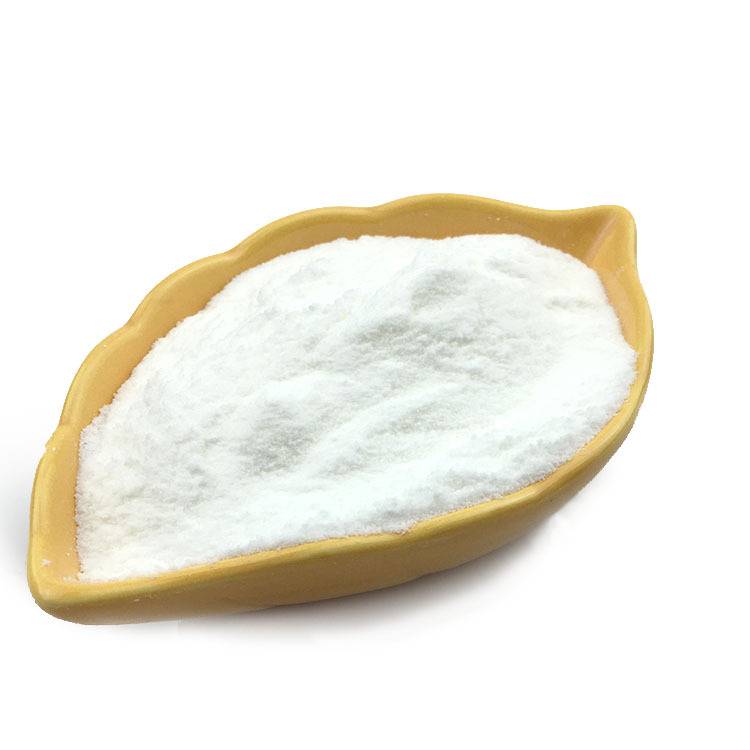
1.2 Types and quantities
The types and quantities of GOS are affected by many factors, such as the enzyme source, reaction conditions, substrate concentration and hydrolysis rate. The properties of GOS from different sources are very different; although the enzyme source can determine the specificity of glycosidic bond connection to a certain extent, it is still affected by many factors, such as pH value, Mg2+ concentration and lactose isomers.
Galacto-oligosaccharides are mainly divided into β-galacto-oligosaccharides and α-galacto-oligosaccharides. β-galacto-oligosaccharides can be synthesized by β-galactosidase using lactose as a substrate through the enzymatic reaction of galactosylation. The composition of the GOS sugar chain synthesized by different enzyme sources also differs. α-Lactose is synthesized by β-galactosidase first hydrolyzing lactose into glucose and galactose, and then by Candida guilliermondii α-galactosidase connecting α (1→ 6) glycosidic bonds. Its main component is melezitose, also known as “bifidus factor”, which is acid-resistant, thermally stable and has good storage stability .
1.3 Physiological function
Bifidobacteria are a type of microorganism that is very important for maintaining human intestinal health [3]. Studies have found that the establishment of bifidobacteria in the intestines of breastfed infants is mainly due to the oligosaccharide component. The enzymatically synthesized GOS structure is consistent with breast milk. It is not broken down or absorbed in the upper gastrointestinal tract of the human colon, and can selectively promote the proliferation of some probiotics in the colon, such as bifidobacteria (Bifidobacterium) [4]. The acidic environment created by the growth of bifidobacteria can inhibit the growth of other harmful bacteria [5]. Therefore, it has many related physiological functions: (1) regulating the balance of intestinal flora and improving immunity; (2) increasing the activity and content of superoxide dismutase (SOD) and resisting aging; (3) producing a large amount of short-chain fatty acids, stimulating intestinal peristalsis, increasing stool moisture and preventing constipation; (4) improving lactose intolerance; (5) lower blood pressure; (6) reduce the production of toxic fermentation products such as indole and formic acid and harmful enzymes, while producing B vitamins, niacin and folic acid, which are beneficial to health.
In addition, ingesting GOS can improve lipid metabolism and lower serum cholesterol concentrations; improve the absorption of mineral elements [6], promote the intestinal absorption of calcium, magnesium and potassium, and reduce the absorption of sodium; at the same time, GOS is also non-cariogenic and indigestible, is a low-energy sugar, and does not cause obesity. Recent studies have shown that GOS can also inhibit the binding of Vibrio cholera toxin to ganglioside receptors, and is used in the pharmaceutical industry [7].
There are five main methods for preparing GOS: extraction from natural raw materials, acid hydrolysis of natural polysaccharides, chemical synthesis, fermentation, and enzymatic synthesis. However, in nature, GOS is very rare, colorless, and non-charged, making it difficult to extract and separate. The yield of natural polysaccharide conversion products is low, the product composition is complex, and it is difficult to obtain pure products. Chemical synthesis is toxic, prone to residue, has a low yield, and seriously pollutes the environment.
There has been little research on the production of GOS by fermentation, and the main method is to synthesize GOS using microbial fermentation [8], but this is still in the laboratory stage, and none of the above four methods cannot be applied in actual production. The enzymatic synthesis of GOS mainly uses high-concentration lactose or whey as raw materials, which are catalyzed and synthesized by β-galactosidase. This method has the advantages of a simple reaction, sufficient raw materials, low production costs, and non-toxicity. It is currently the main method for industrial production of GOS. The following details the enzymatic synthesis of GOS.
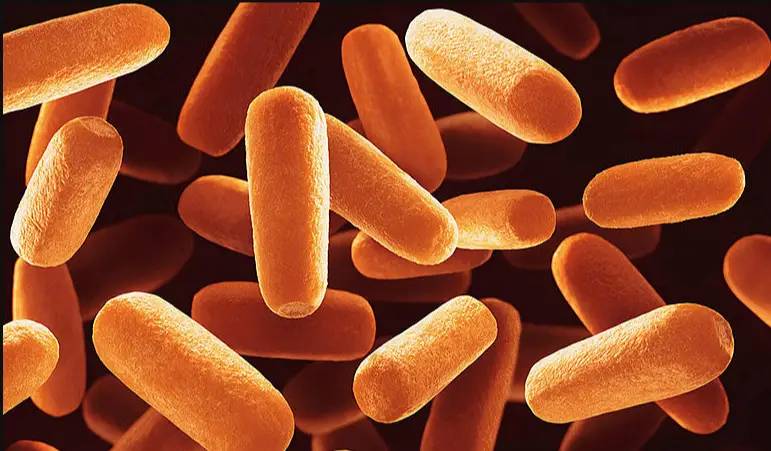
2.1 Source and characteristics of β-galactosidase
β-galactosidase (EC 3∙2∙1∙23) is an enzyme of great commercial value in the dairy industry. It is widely distributed in animals, plants and microorganisms, and is generally obtained from microorganisms for practical applications [9].β-galactosidase from different sources has different properties, and the optimal reaction conditions and conversion rates for synthesizing GOS also vary greatly. Considering the safety factor of enzyme residues in food, microorganisms such as A∙niger, A ∙oryzae, K ∙lactis and K∙frag ile are generally used as enzyme sources. In 1996, the FDA determined that Candida pseudotropicalis β-galactosidase, which is used in milk and dairy products, is also GRAS [10].
Generally, the β-galactosidase of molds is an extracellular enzyme with an optimum pH of 2.5–4.5. It is relatively cheap and commonly used because of its high enzymatic activity, but it has poor enzyme stability. The β-galactosidase of yeasts is mainly an intracellular enzyme with an optimum pH close to neutral, which is suitable for the hydrolysis of milk and whey.
2.2 Catalytic mechanism and influencing factors
Early studies showed that β-galactosidase hydrolyzes lactose in at least three steps, with the last step exhibiting hydrolytic or transferase activity.
enzyme + lactose → enzyme - lactose (1) enzyme - lactose → galactosyl - enzyme + glucose (2) galactosyl - enzyme + acceptor → galactosyl - acceptor + enzyme (3) When studying the activation and inhibition of enzymes by pH in the early days, it was found that the active site of neutral β-galactosidase has two functional groups: one is the thiol group, and the other is the imidazole group as a nucleophilic group, which promotes the cleavage of the glycosidic bond [8].
Recent studies have shown that the catalytic mechanism of β-galactosidase is similar to that of lysosomes, that is to say, one group in the active centre acts as a general acid, providing a proton to the oxygen in the glycosidic bond, while the other negatively charged group can stabilize the positively charged carbon atom in the galactoside by forming a covalent bond in the transition state [11]. When the acceptor is water, galactose is formed, and when the acceptor is a sugar, oligosaccharides are formed. Therefore, the hydrolysis reaction can be considered a special transfer reaction in which water acts as the acceptor of the galactoside. In most cases, the hydrolysis reaction dominates because the water content in the reaction system is high, resulting in a low yield of oligosaccharides [2].
The reaction system for GOS synthesis is very complex, with both transfer and hydrolysis reactions occurring simultaneously. The substrate concentration and temperature have a significant effect on the transfer reaction. The product glucose is a non-competitive inhibitor of the transfer reaction, while galactose is a competitive inhibitor [12]. GOS synthesis is also related to the reaction substrate. For example, the synthesis rate of GOS by K∙lactis β-galactosidase in a buffer containing 5% lactose is is greater than that in milk [13]. In addition, β-galactose undergoes an inversion reaction, and the resulting α-galactose is a stronger inhibitor. As the enzyme concentration increases, the rate of GOS synthesis increases, but so does the inversion reaction. Therefore, the enzyme concentration should not be too high.
At present, the main methods for increasing GOS yield are to increase the substrate concentration and reduce the water content in the system. In addition, removing glucose from the system can also increase the yield of GOS.
2.3 Catalytic forms
There are three main catalytic forms of enzymatic synthesis of GOS: (1) free enzymatic reaction. This method is relatively mature and is currently a common method for industrial production of GOS. However, due to the high moisture content and strong hydrolytic ability in the reaction system, the product has a high content of monosaccharides, which requires a large amount of enzyme and is therefore more expensive. Hsu C A et al. used Bifidobacterium β-galactosidase to synthesize GOS with a yield of up to 32∙5% using 40% lactose as a substrate at a reaction temperature of 45°C and pH 6∙8 [14]. According to a study by H a-Y oung et al., a thermostable β-galactosidase derived from Sulfolobus solfataricus was used. Under reaction conditions of pH 6∙0 and a temperature of 80°C, with 600 g/L of lactose as the substrate and 3∙6 U/mL of enzyme, the GOS yield can reach 52∙2% (w/w) [15]; (2) continuous reaction of immobilized enzyme.
After immobilization, the thermal stability of the enzyme is greatly improved, its tolerance to acid and alkali is enhanced, it can be reused, and the product obtained does not contain the enzyme, and the quality is stable [16]. The ability of immobilized enzymes to catalyze the synthesis of GOS is superior to that of free enzymes, because compared with lactose, GOS molecules are larger and more difficult to bind to free enzymes, so they are not easily degraded. César et al. found that the use of glutaraldehyde or acetaldehyde-immobilized β-galactosidase to hydrolyze milk can greatly reduce non-competitive inhibition and the hydrolysis rate is higher than that using free enzymes or glycan-immobilized enzymes [9].
ThierryM et al. found that after K∙lactis β-galactosidase was immobilized with D uolite A -568 as the carrier, the yield of GOS synthesized using a microwave-assisted method in the presence of a cosolvent, hexanol, in the substrate solvent could be increased by 217 times [17]. P ocediĉová K et al. applied ceramic membranes (150KDa) technology to a continuous reaction system, which completely blocked the enzyme, i.e., achieved the effect of immobilization, and also avoided the loss of enzyme activity, which is suitable for the industrial production of GOS [18].
Yoon S S and others studied the loss of enzyme activity after immobilizing K∙lactis β-galactosidase using silica gel as a carrier and glutaraldehyde as a cross-linking agent. The results showed that after cross-linking, the enzyme activity was 2.6 times higher than that of the crude immobilized enzyme, and after 10 reuse cycles, the enzyme activity was still 63.9% [19]. (3) Non-aqueous phase enzymatic reaction. The use of organic solvents can reduce the water activity in the reaction system, shift the reaction equilibrium towards galactosylation, and facilitate the synthesis of GOS [20]. Isabeldel-V al M et al. used lactose as a substrate to synthesize GOS enzymatically in a two-phase medium containing polyethylene glycol, and the synthesis rate was greatly improved compared to the aqueous phase [21]. W iraya S et al. used cyclic dextrin as a carrier to immobilize β-galactosidase, and then hydrolyzed lactose in a system of water-triethyl phosphate (50%, v/v), and the GOS content increased significantly [22].
2.4 Production status
At present, oligosaccharides in China are still a new industry. Only oligoisomaltose and oligofructose can reach a production scale of thousands of tons. The development of GOS has not yet reached a large scale. The main reason restricting the industrial production of GOS in China is the lack of β-galactosidase with excellent performance and the cost of imported commercial enzymes. It is understood that Japan is the most developed country in the world oligosaccharide industry, with a total output of 50,000 tons, of which the annual output of GOS has reached 6,500 to 7,000 tons (market price of 50,000 yen / ton), ranking second in the world. With changes in the diet, consumption of meat and dairy products is gradually increasing, while consumption of cereal-based foods is decreasing. As society ages, the incidence of hypertension, diabetes, and various oral and digestive diseases is also increasing. Society's demand for functional foods and health products is also increasing, and the research and development of functional products is considered to be the most important issue in the 21st century. China's abundant product resources have not been fully developed and utilized, and the development of functional oligosaccharides will undoubtedly have a huge market.
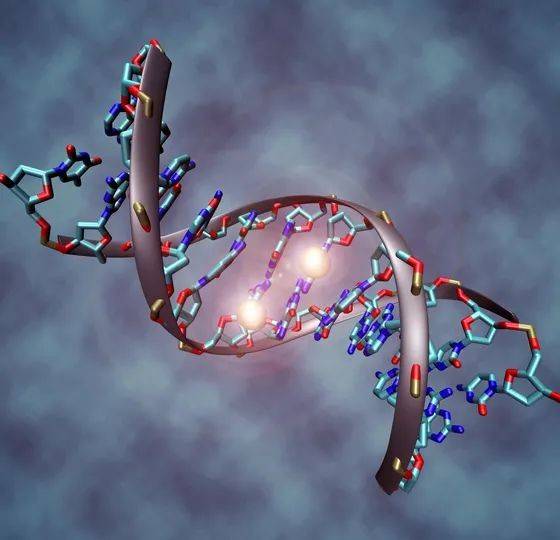
3 GOS detection and separation and purification
The main GOS detection methods are paper chromatography (PPC), thin-layer chromatography (TLC), gas chromatography (GS) and high-performance liquid chromatography (HPLC). Among these, HPLC is widely used because of its advantages of being simple and fast, easy to pre-process, with good separation results and high reproducibility. Because sugars do not absorb in the normal ultraviolet region and visible light range, and they do not fluoresce, the detector for GOS is usually a differential refractive index detector (RID), rather than a UV detector (UV) or a fluorescence detector (FD). If mass spectrometry (MS) is used as the detector or nuclear magnetic resonance spectroscopy (NMR) is used, information such as relative molecular mass and structure can be provided, which increases the specificity of the function [23].
At present, one of the main problems restricting the development and application of GOS in China is its low purity. At this stage, the main methods of separating and purifying GOS are column chromatography, membrane separation, enzymatic methods and microbial fermentation. The advantage of column separation is that it can be operated continuously in cycles, saving time. Although the cost is higher and the operation is more complicated, the rapid and efficient separation of GOS by ion exchange resin is extremely outstanding and far superior to other chromatographic separation media. It has been successfully applied to the industrial separation and purification of GOS.
Membrane separation is based on the size of the filter membrane pores to achieve the purpose of separation. It has no phase change and low energy consumption. However, the large amount of lactose in the GOS raw material makes separation and purification difficult. The enzymatic method uses enzyme preparations to specifically remove certain components from a mixture, but the cost is too high because enzymes are expensive. The microbial fermentation method removes non-functional oligosaccharides by selecting appropriate microorganisms for fermentation, which is relatively low-cost, but the breeding of bacteria is difficult. Chao-Chun C et al. used Kluyveromyces marxianus to ferment a mixture containing glucose, galactose, lactose and other disaccharides, which can purify GOS mixtures with contents of 31% and 32% to 97% and 98%, respectively [24].

4 Prospects for the application of GOS
GOS has broad prospects for application in functional foods because of its many advantages over other sugars. (1) It can be used in dairy products to solve the problem of lactose intolerance; (2) it can be used in health foods to promote the absorption of calcium, magnesium and phosphorus and improve the efficacy of the product; (3) it can be used in lactic acid fermented foods to increase the number of lactic acid bacteria and shorten the fermentation cycle; (4) it can be used in baked goods [25] to improve their flavor, texture and color, and its nutritional value will not be lost during high-temperature heating. Because it is low in energy and non-digestible , which can reduce the incidence of obesity; (5) can be added to ice cream to prevent the precipitation of lactose crystals, improve product quality and extend the shelf life; (6) the synthesis of GOS from lactose in whey comprehensively treats the environmental pollution caused by whey discharge and saves a lot of energy [26].
5 Outlook
GOS, as a new type of functional food additive, has attracted worldwide attention due to its unique physiological functions and excellent physicochemical properties. With the continuous development and research of GOS, coupled with the abundance of raw materials in China and the unlimited potential of the consumer market, it is believed that in the near future, GOS will set off a strong development trend in China and bring huge ecological and economic benefits.
Reference
[1]R abiu B A, JayA J, G ibson G R, e t a l. Syn thesis and ferm en- ta tion p ropertiesofnovel galacto-oligosaccharidesbyβ- galacto- sidases from B ifidobacterium species [J] . App lied and E nviron- mentM icrobiology, 2000, 67: 2526-2530.
[2]R aymond R M. G alactosy l-oligosaccharide formation during lac- tose hydrolysis: a review [ J] . F ood C hemistry, 1998, 63(2): 147-154.
[3]H ung M N, L ee B H. Purification and characterization of a re- combinan t β- galactosidase with transgalactosy lation activity from B ifidobacterium infan tis HL96 [ J] . App lied M icrobiology and B iotechnology,2002, 58: 439-445.
[4]G ibson R G, R oberfroid M B. D ietary modulation of the hum an colonicmicrobiota: in troducing the concept of p rebiotics [ J] . Journal ofN u trition, 1995, 125: 1401-1412.
[5]Tanaka R, Takayama H, M orotom i M, e t a l. E ffects ofadm in- istration of TOS and B ificobacterium breve 4006 on the hum an fe- cal flora [J] . B ificobacteria M icroflora, 1983, 2: 17-24.
[6]C honan, O, M a tsumoto, K,W a tanuki, M. E ffect of galactoo- ligosaccharides on calcium absorption and p reven ting bone loss in ovariectomized rats [J] . B ioscience B iotechnology and B iochem - istry, 1995, 59: 236-239.
[7]H aydn R S, Jaap D S, G lenn R G, e t a l. G alactooligosacchar- ides (GOS) inhibitV ibrio cholera toxin binding to its GM1 re- ceptor [J] . JournalofAgricultural and F ood C hemistry, 2009, 57: 3113-3119.
[8]W allenfels K, M alhotra O P. G alactosidases [J] . A dvances in C arbohydrate C hemistry, 1961, 16: 239-298.
[9]C sarM, R ubens M, B enevides C C P, e t a l.Immobilization of lactase from K luyverom yces lactis greatly reduces the inhibition p romoted by g lucose.Fullhydrolysis of lactose in m ilk [J].A - merican C hemicalSoclety and American institu te of C hemical Engoineers, 2004, 20: 1259-1262.
[10] B onekamp F J, O osterom J. O n the safety of K luyverom yces lactis- a review [J] . App lied M icrobiolog ical B iotechnology, 1994, 41: 1-3.
[11]SinnottM L. Ions, ion- pairs and catalysis by the lac Z β- galactosidase of E scherichia coli [ J] . FEBS L e tters, 1978, 94: 1-9.
[12] C availle D, C ombes D. C haracterization of β - galactosidase from K luyverom yces lactis [J] . B iotechnology and App lied B i- ochemistry, 1995, 22: 55-64.
[13]Kwok H S,Jeon I J. E ffect ofvarious conditions on the formation ofoligosaccharides in m ilk treated with β - galactosidase[J] . JournalofD airy Science,1980,69(11):2785-2790.
[14]A aron G,Johan A,G eoffW S,e t a l. Facile p retreatment ofB acillus circulansβ- galactosidase increases the y ield of galactosy l oligo- saccharides in milk and lactose reaction sys tems[J]. Journal of Agricultural and F ood C hemistry,2009,57(24):11570-11574.
[15]H a-Y oung P, Hye- JungK, Jung-K ul L, e t a l. G alactool- igosaccharide p roduction by a thermostable β - galactosidase from Sulfolobus solfataricus [J] . W orld JournalofM icrobiology and B iotechnology, 2008, 24: 1553-1558.
[16]M iguel H, L pez L, M nica G. F ormation ofoligosaccharides during enzymichydrolysisofmilkwhey permeates [J] . P rocess B iochemistry, 1995, 30(8): 757-762.
[17]ThierryM, D am ian G, M arie D L, e t a l. M icrowave-assisted syn thesis of galacto-oligosaccharides from lactose with immobi- lized β - galactosidase from K luyverom yces lactis [ J] . B io- technology L e tters, 2003, 23: 623-629.
[18]P ocediĉováK, Ĉurda L, M isun D, e t a l. P reparation of galac- to-oligosaccharides using membrane reactor [J] . Journal of F ood E ng ineering, 2010, 99: 479-484.
[19]Y oon S S, Jong H L, SeongW K, e t a l. P erformance ofβ- galactosidase p retreated with lactose to p reven t activity loss dur- ing the enzym e immobilizationp rocess [ J] . F ood C hemistry, 2010, 123(1): 1-5.
[20] Inchaurrondo V A, F lores M V, V oge t C E. G row th and β- galactosidase syn thesis in aerobic chemosta t culturesofK luyvero- m yces lactis [J] . Journal of Industrial M icrobiology& B iotech- nology, 1998, 20: 291-298.
[21] Isabel M, C ristina O. B iphasic aqueousmedia containing poly- e thy lene g lycol for the enzymatic syn thesis of oligosaccharides from lactose [J] . E nzym e and M icrobial Technology, 2003, 33: 118-126.
[22]W iraya S, P iamsook P. E nhancement of the oligosaccharide syn theticactivity ofβ- galactosidase in organic solven ts by cy- clodextrin [ J] . E nzym e and M icrobial Technology, 2008, 43: 436-441.
[23]L eon C, Johan T, R ichard B, e t a l. In-depth characteriza- tion of p rebiotic galacto-oligosaccharides by a combination of analytical techniques [ J] . Journal of Agricultural and F ood C hemistry, 2009, 57: 8848-8495.
[24]C hao-C hun C, M ei- C hing Y, T zu- C hien C, e t a l. P ro- duction ofhigh-contentgalacto-oligosaccharideby enzym e ca- talysis and fermen ta tion with K luyverom yces marxianus [ J] . B iotechnology L e tters, 2006, 28: 793-797.
[25] Tomomatsu H. H ealth effects of oligosaccharides [ J] . F ood technology, 1994, 10: 61-65.
[26]M ervat I F, L opez- L eiva M. C ontinuous p roduction ofoligo- saccharides from whey using a membrane reactor [J].P rocess B iochemistry, 2000, 35: 581-587.


 English
English French
French Spanish
Spanish Russian
Russian Korean
Korean Japanese
Japanese